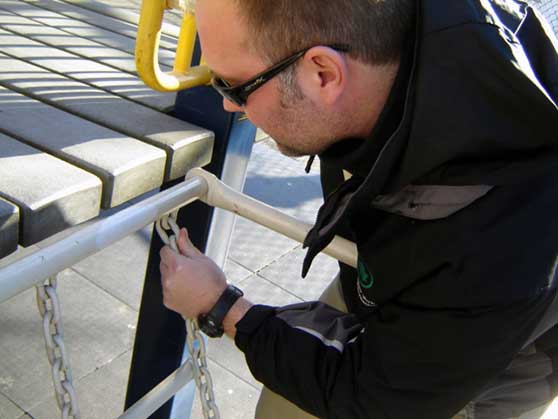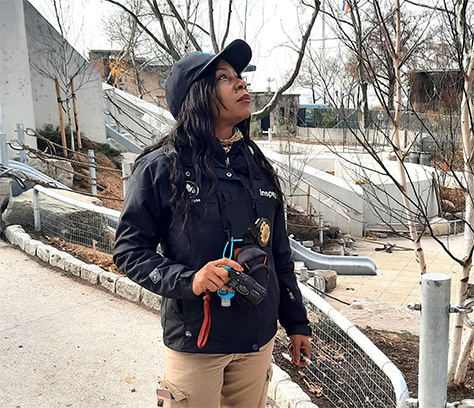Ratings Determinations
The Parks Inspection Program (PIP) provides a broad indicator of the condition of New York City parks. The following are ratings definitions used in the program.
Cleanliness Features

Litter: all refuse that has been discarded somewhere other than a proper garbage bag or receptacle, large quantities of natural debris or accumulated grime, stains, or bird or animal feces on structural features, and health hazards such as condoms, syringes, and dead animals.
Glass: broken glass found on structural features or on the ground.
Graffiti: all spray paint, permanent markers, stickers, and adhesive posters that have been illegally applied or affixed to any surface.
Weeds: unwanted, unsightly vegetation in and around structural features, growth in clay infields of a baseball or softball field, and weeds coming through fences from non-Parks property onto Parks property.
Ice: during the Winter season, sidewalks, staircases and ramps are checked for the presence of compacted snow or ice after a snowfall.
Landscape Features
Lawns: all areas not designated for active recreational use where grass, shrubs, or horticultural plantings do or should exist are checked to ensure that they are properly irrigated and mowed, and that they are not eroded, rutted, uneven, or weed-infested.
Water bodies: natural and man-made bodies of water in or bordering a park are checked for debris, excessive algae, and excessive plant growth. Outdoor public pools and wading pools are not rated as water bodies.
Trees: inspectors watch out for low-hanging branches, dead limbs, dead trees, and protruding tree stumps.
Trails: all unpaved paths in a natural area are inspected to determine if they are rutted, eroded, full of pooling water, or impassable because of growth.
Athletic fields: lawn or dirt areas designated for active recreational use are inspected to see if they are overgrown, eroded, rutted, or bare. Artificial turf fields, running tracks, and the clay infields of turf ballfields are checked for divots, holes, uplifts, and missing sections.
Horticultural areas: ornamental planted areas are inspected to determine if they are generally unkempt, bare, full of weeds, or if the plants are dead or dying.
Structural Features

Play equipment: all equipment in a park or playground intended for use by children at play, or for recreational use by teenagers and adults are checked for structural deterioration and usability.
Paved surfaces: drains, utility covers, quick-couplers, stairs, retaining walls, and hard pavements, excluding sidewalks, are checked for structural deterioration such as severe spalling, chipping paint, missing segments, holes, cracks, protrusions, and uplifts.
Benches: benches, bleachers, and picnic tables are inspected to determine if they are damaged, require paint, or are missing slats.
Fences: all fences and guardrails are checked for structural defects, the number of non-formalized sneakholes present, and to determine if fences are rusted or in need of painting.
Sidewalks: curbs, drains, and utility covers on or adjacent to sidewalks are inspected along with sidewalks for severe spalling, missing segments, holes, cracks, protrusions, and uplifts.
Safety surfacing: all materials under and around play equipment whose purpose is to protect against injuries due to falls is checked for missing or protruding plugs, metal anchors with missing rubber caps, or any section that is damaged, worn, or uplifted.